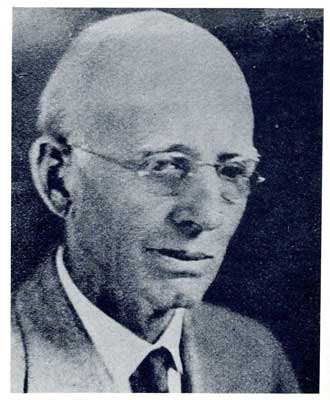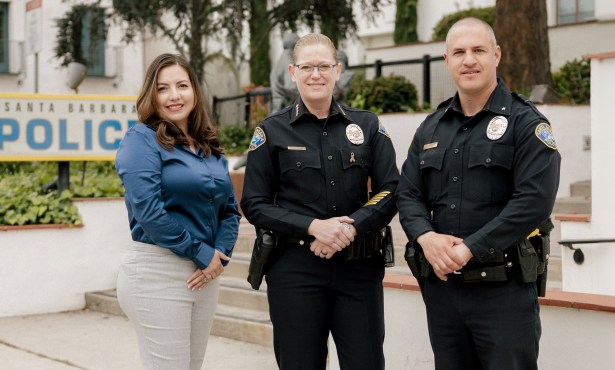Who was Samuel Crow?
S.B. Superior Court Judge Who Saved Tucker’s Grove in 1911
Samuel Eugene Crow is probably best-known in local lore for his leading role in saving Tucker’s Grove in the Goleta Valley from development. His success in persuading would-be buyers in 1911 to allow the site to be purchased for public use reflected his great influence at that time. So just how had he come to achieve this position of esteem?

An examination of Crow’s early life yields little that hints at the distinguished career awaiting him. He was born in Illinois in 1860. His father, Jerome, was an inveterate wanderer, constantly roaming in search of a better life. He farmed in Kentucky, moved to Nebraska, settled in Illinois, and then, shortly after his son’s birth, moved the family back to Nebraska.
During the Civil War, Jerome hauled supplies for the Union army in Kansas, Colorado, and New Mexico, a job that opened up new vistas to him. He was deeply impressed by the beauties of the West and the possible opportunities afforded to one who was willing to grasp them.
Mother Nature eventually drove the Crows off their Nebraska farm. Years of failing crops capped by a grasshopper infestation forced the family, in 1875, to hook up with a wagon train moving west, destination New Mexico. Jerome tried his hand at mining, and for a year he moved from place to place in New Mexico and Arizona, trying to strike it rich in both silver and gold mining. An acquaintance then convinced him to come to California.
He took Samuel, then 16, with him. The two made their way on horseback through San Diego, Los Angeles, and Kern counties. Young Samuel was hired on by the Southern Pacific Railroad as a construction worker. He eventually was promoted to camp boss, in charge of explosives. After leaving the railroad, he worked a number of other jobs, clearing swampland near Bakersfield and as a drayman. Early in 1878, he rejoined his father, who had taken up farming in the Santa Maria Valley.
In 1880, Crow began studying law at the Hastings College of the Law in San Francisco. After a year, he continued his studies with “on-the-job” training with Judge W.C. Stratton in Santa Barbara. In 1882, he was elected justice of the peace in Santa Maria and was admitted to the bar in 1883.
After a two-year stint as assistant district attorney, he went into private practice, only to be appointed by the governor to fill a vacated term on the Santa Barbara Superior Court bench. He decided to run for the post in 1908.
The election demonstrated a growing political split between the northern and southern parts of the county reminiscent of today. Crow’s opponent was Democrat R.B. Canfield, a prominent attorney whose main backing came from Santa Barbara and its environs. Democratic rhetoric portrayed Crow as a young, inexperienced bumpkin, while Republicans painted Canfield as a stooge of the all-powerful Southern Pacific Railroad. Crow was victorious and went on to win reelection in 1914, 1920, and 1926.
Crow was an innovator, especially in dealing with juveniles. He was primarily responsible for establishing juvenile courts in the county, and worked closely with other public officials and private agencies to see after the welfare of juvenile offenders. He appointed the first probation committee for the county, which “provided for the control, protection, and treatment of dependent children.” Crow viewed the legal system as a vehicle for rehabilitation of troubled youths, not just for the dispensation of punishment. As the charter of the county Detention Home put it, “Every child who is in conflict with society [has] the right to be dealt with intelligently as society’s charge, not society’s outcast.” Judge Crow heartily agreed with this philosophy.
Samuel Crow retired in 1932 and died in 1941. Tucker’s Grove may have been the most visible of his legacies, but his work on the judicial bench has been the most lasting.



